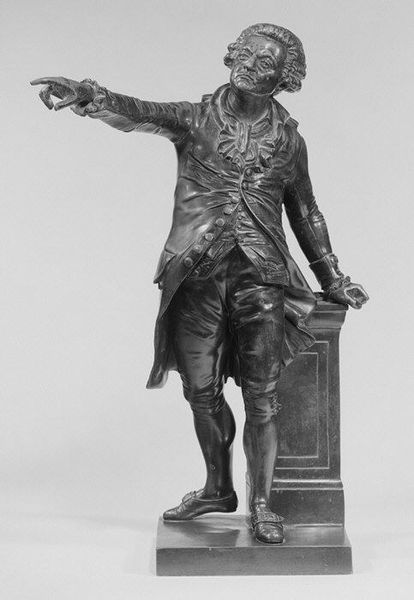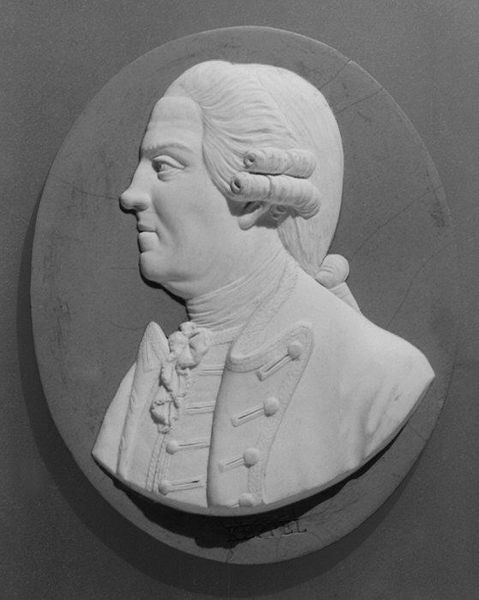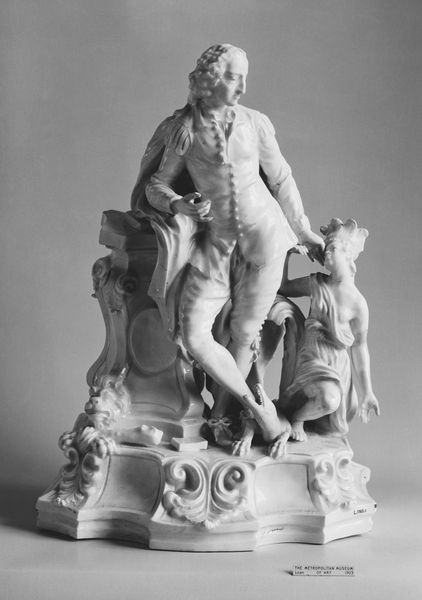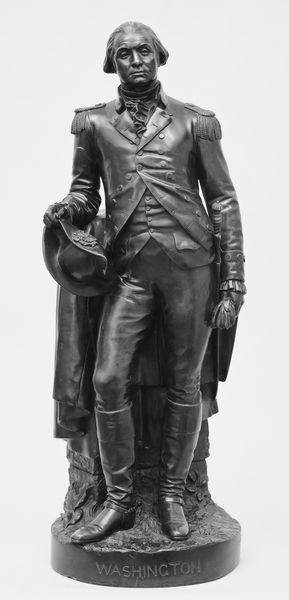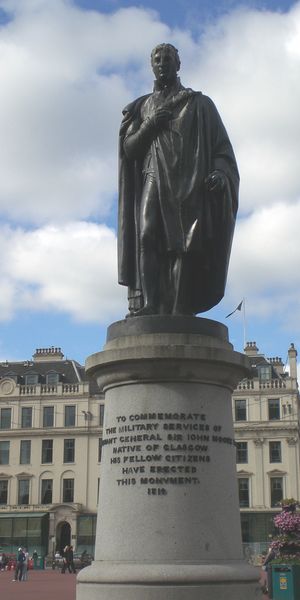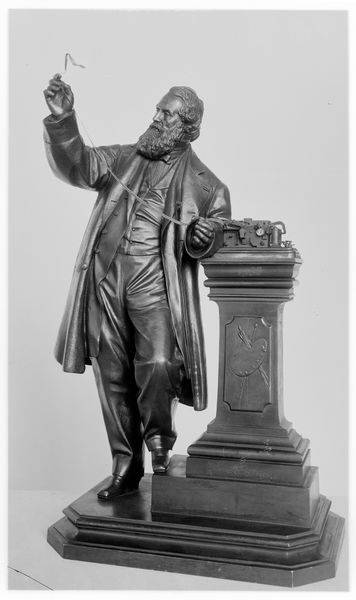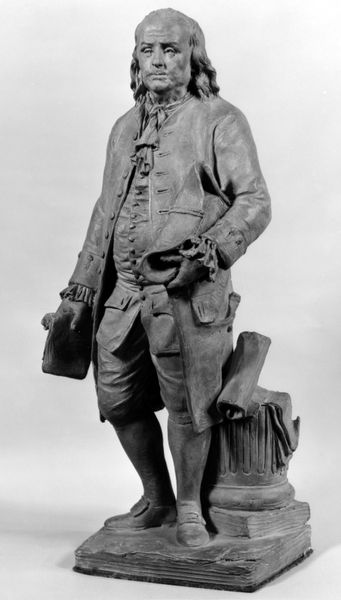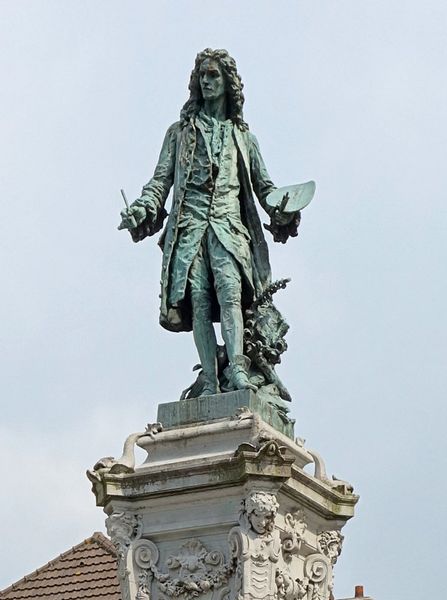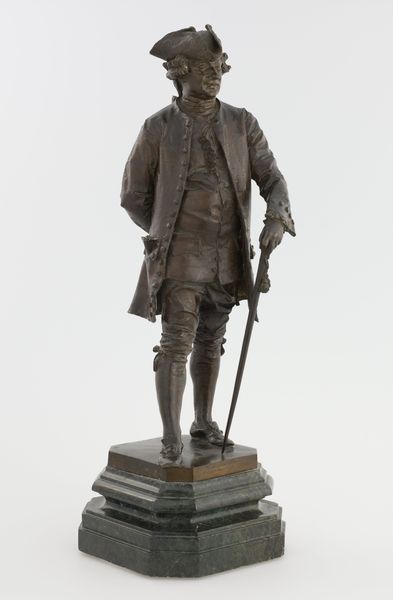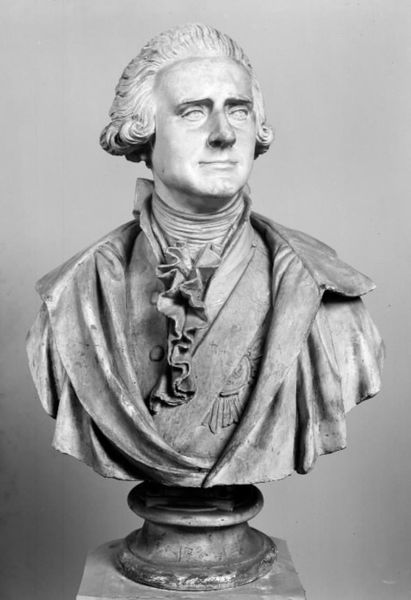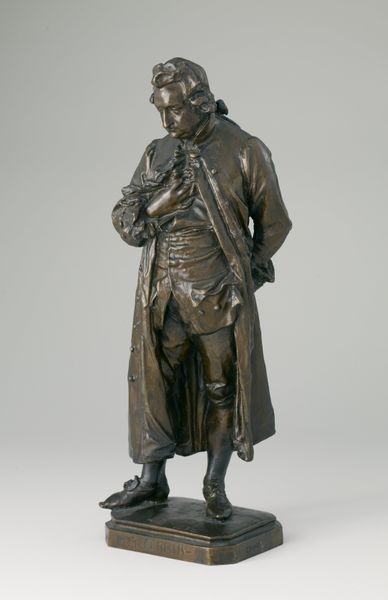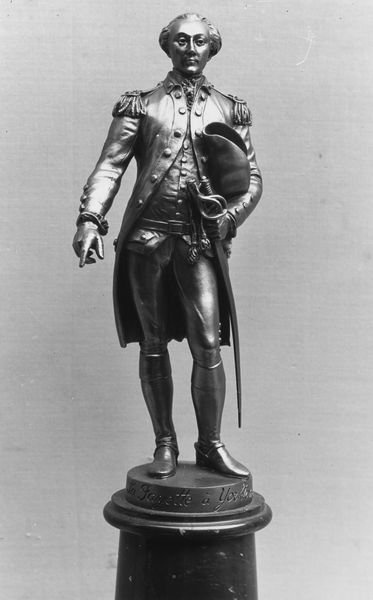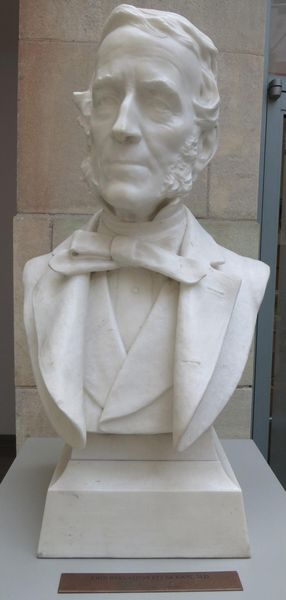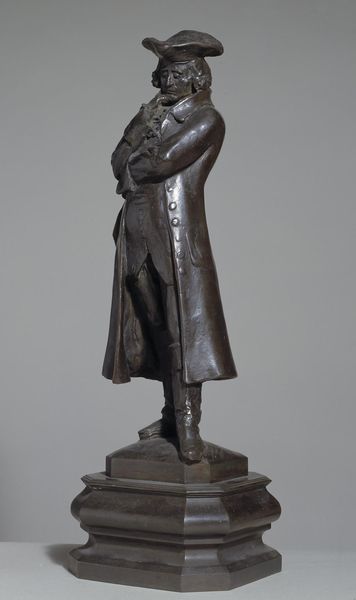
carving, public-art, sculpture, marble
#
portrait
#
public art
#
statue
#
carving
#
neoclassicism
#
sculpture
#
classical-realism
#
public-art
#
sculpture
#
marble
#
statue
Copyright: Public domain
Editor: This is a marble sculpture, entitled “Statue in the Hôtel De Ville of Paris,” by Jean-Baptiste Pigalle. It's hard to get a sense of the original impact after time and exposure to the elements. I am interested in what you see in this piece, especially in terms of any symbolism embedded within. Curator: Well, let's consider what such a statue was *meant* to communicate, both to its contemporaries and to posterity. Look at his attire. The elaborate clothing – the wig, the jabot, the long coat - speaks of status, of course, but it also situates him within a very specific cultural context. Who does it remind you of, even in posture? Editor: It reminds me of royal portraits… although obviously he isn’t royalty. So it's a portrait but using conventions normally reserved for representations of monarchs. Curator: Exactly! Pigalle is borrowing from a visual language designed to convey power and authority. It begs the question: What kind of power is being alluded to? Where else in society do you find these signifiers? Editor: Maybe power through civic duty, something to aspire to… like service? Is this statue part of an ensemble? Are there others? Curator: Precisely! He would have been surrounded by others representing a range of virtues and achievements, collectively embodying the ideals of the city. It’s a powerful assertion of civic identity, but notice it uses symbolism developed initially by royalty… Power then shifts and finds a new vessel. Does that give you pause at all? Editor: Absolutely, seeing the evolution and reuse of visual symbols is really interesting. Curator: Indeed, and reflecting on this evolution makes one appreciate the nuanced ways power is negotiated through art. I am sure this experience is making you into quite the iconographer yourself.
Comments
No comments
Be the first to comment and join the conversation on the ultimate creative platform.
